The Wellington region achieved a clean sweep of the national plant conservation awards for 2008. Awards were made at a dinner in Wellington on Saturday 9 August and were presented by Ian Spellerberg, President of the New Zealand Plant Conservation Network. “These awards acknowledge the outstanding contribution made by individuals, schools, communities, nurseries and councils in protecting our globally important native plants,” Ian said. The awards were as follows:
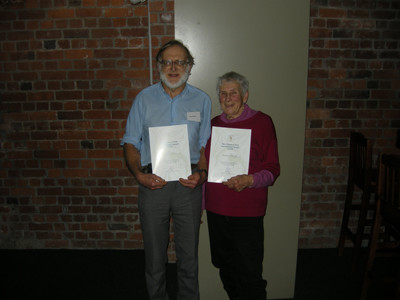 Lifetime achievement
Lifetime achievement
Winners: Barbara Mitcalfe and Chris Horne
dThese are two of the most passionate plant people in Wellington. Stalwarts of the Wellington Botanical Society and highly regarded as botanists and wise minds in the plant conservation world. They are truly amazing inspirational people and have assisted with hundreds of plant surveys, planting projects and guided botanical walks and Botanical Society trips.
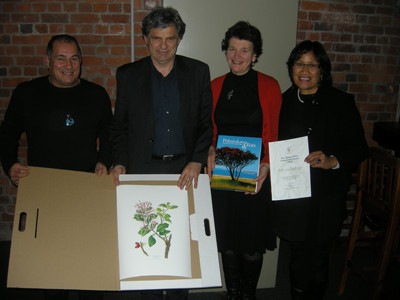 School
School
Winner: Kelburn School Gully Project
Over the past decade, the Kelburn School community has returned a large blackberry infested gully to its native state. The species are based on the Wellington Botanical Gardens bush remnant species list. Plants have been ecosourced in conjunction with Otari and WCC. Of particular importance are the three black maire gifted by the Botanical Society in recognition of the commitment to restoring the gully. This gully, in earlier times, was ecologically contiguous with the Botanic Gardens.
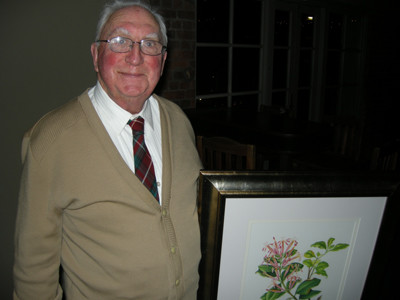 Individual
Individual
Winner: Arnold Dench
In the 1950s, Arnold, with his wife, Ruth, began converting a steep, wind-swept paddock in Newlands, Wellington, into a native plant garden of national importance. Since then, they have specialised in our alpine flora, e.g., Celmisia, Myosotis, Wahlenbergia, Ourisia, Ranunculus, ground covers, grasses and grass-like plants, learning, by trial and error, how to germinate the seeds, grow on the seedlings, and raise them to adulthood. Arnold has provided threatened plant material to Percy Scenic Reserve and Otari-Wilton’s Bush, Wellington, and, at other times, accepted seed and specimens from these reserves, and from botanists around NZ, for growing on, and return. Arnold and Ruth have always been ready to pass on what they have learnt about the cultivation and horticultural use of our native plants, and are as keen to learn from others. Arnold’s knowledge of our alpine flora, his readiness to share that knowledge, his exchanges of plant material, and his presentations on alpine plants, have made an outstanding contribution to the profile of our threatened native plants.
Nursery
Winner: Berhampore Nursery, Wellington City Council
Each year Berhampore Nursery Manager Jonathan Bussell and his team produce 100,000 ecosourced plants for use throughout the city in restoration programmes, rehabilitation, streamside and wetland plantings and for schools. There are few parts of the city from its coastal margins to the grey scrublands at the highest points on Mount Kaukau that the Berhampore team has not touched through the growing programmes at the nursery. Jonathan has developed a core suite of ecosourced ‘bombproof’ species as the base for planting programmes. Plants grown include Metrosideros robusta, podocarps, which targets suitable sites for reintroduction of species for future emergent forest, and Spinifex sericeus, Desmoshoenus spiralis and Lepedium oleraceum for coastal revegetation programmes. The nursery team is an invaluable resource for the city and for supporting the community at large.
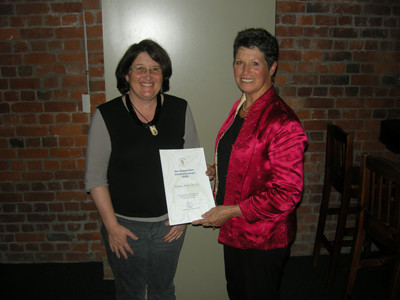 Community
Community
Winner: Waitohu Stream Care Inc.
This group was formed in 1999 to improve the riparian environment of Waitohu Stream on the Horowhenua Coast. The group has built its own nursery and produced 1000s of native seedlings that have been planted to stabilise the Waitohu Stream and provide habitat for fauna.
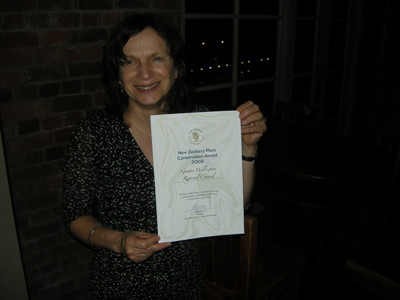 Council
Council
Winner: Greater Wellington Regional Council
Greater Wellington has been leading a range of programmes throughout the region including habitat protection, community restoration days, coordinating plant groups, undertaking pest control. The team, including Tim Porteous, Philippa Crisp, Robyn Smith and many more, is achieving great things for plant conservation in Wellington.
